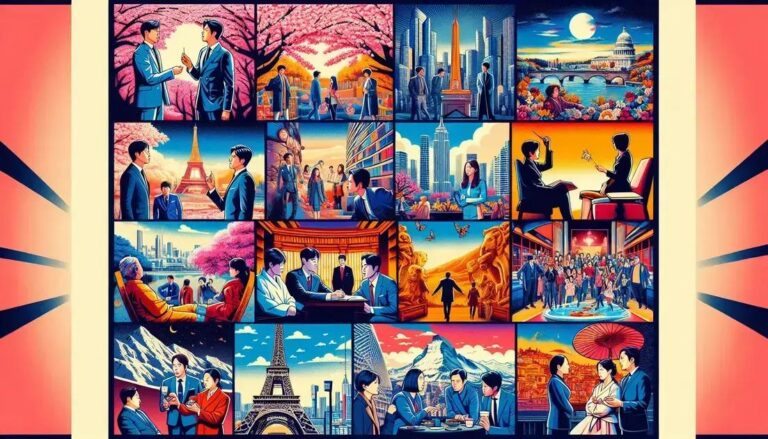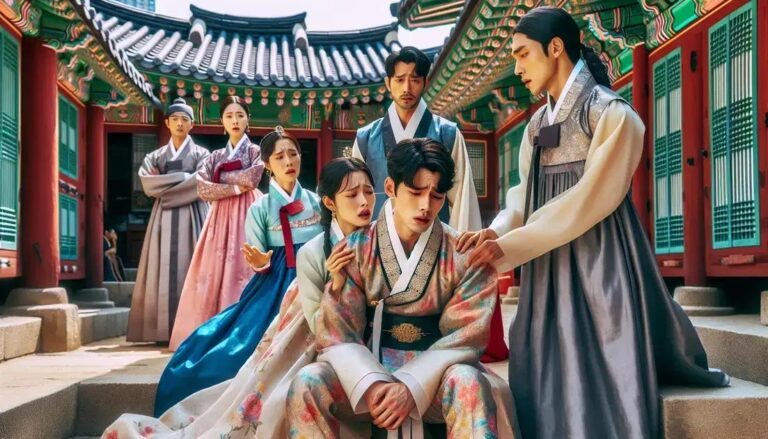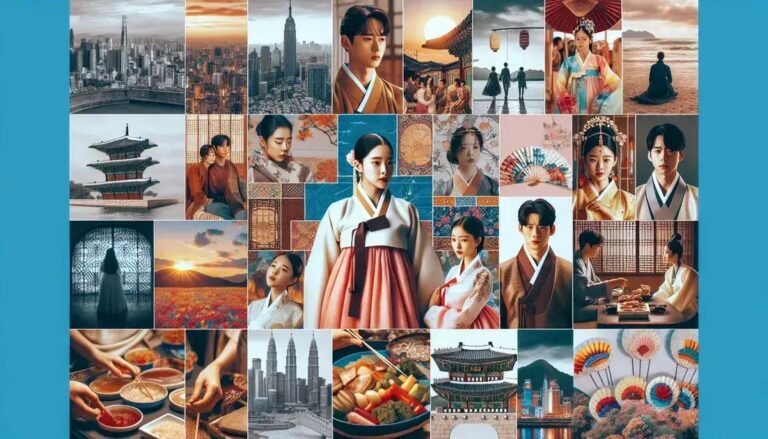Anúncios
**Production differences in Korean, Japanese, and Chinese dramas** offer a captivating glimpse into each culture’s unique storytelling approach. These dramas not only entertain but also provide insight into the diverse techniques employed across Asia. From distinctive filming methods to varied storytelling styles, each country’s dramas reflect their cultural identity. With this guide, dive deep into the fascinating world of Asian dramas and explore how music and soundtracks play an essential role in the viewing experience.
Cultural Influences on Drama Production by Country
Asian drama production varies significantly due to cultural influences in each country. In Korea, dramas are deeply rooted in societal norms and modern issues. The Hallyu wave has popularized themes revolving around romance, history, and contemporary societal challenges. Korean dramas often emphasize strong emotional connections and intricate character development.
Japanese dramas, or dorama, usually incorporate elements of their rich traditions and literature. The influence of manga and anime is evident, with stories often depicting ordinary life with a twist of magic or mystery. Japanese dramas tend to be shorter, with a focus on innovative storylines and quirky character arcs.
China’s drama industry significantly expands on historical narratives and grandeur. Chinese dramas often incorporate intense historical plots and picturesque settings, blending mythology with contemporary themes. The vastness of China’s history and the diversity of its ethnic groups allow for rich storytelling that captures both the old and new.
Cultural Nuances Impacting Drama Production
The cultural backdrop in each country inherently influences language, behavior, and story arcs, creating a unique viewing experience. Korean dramas often focus on societal dynamics and romantic elements. In contrast, Japanese productions balance realism with fantasy, and Chinese dramas draw heavily from historical events and intricate family sagas.
Filming Techniques: Korea vs Japan vs China
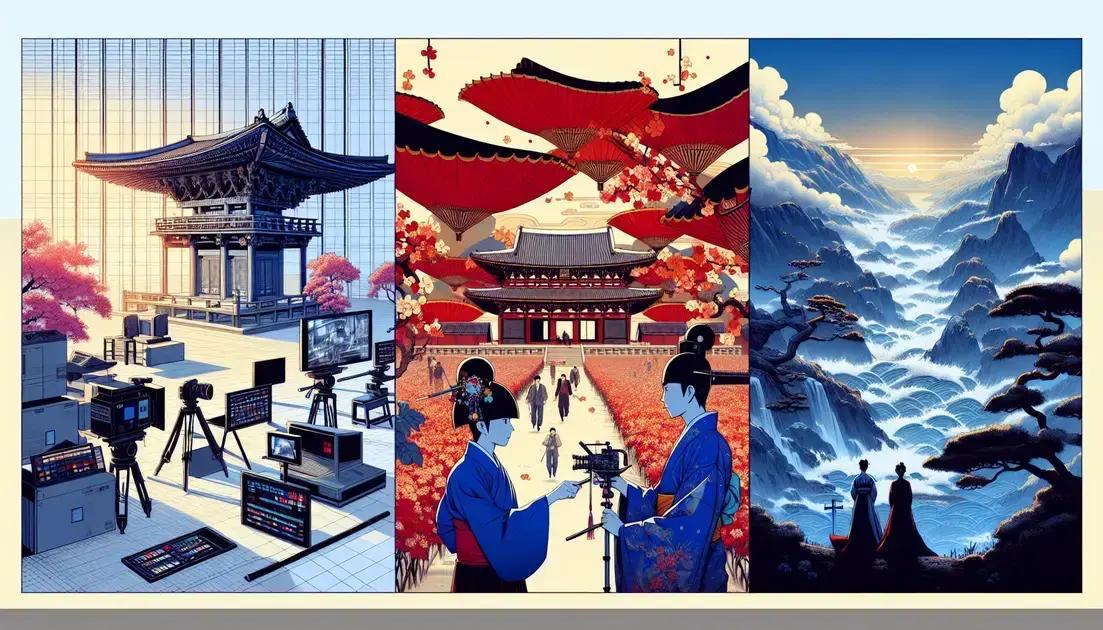
The filming techniques in Korean dramas emphasize high production values and cinematic qualities. Korean sets use cutting-edge technology and often film in stunning locations, offering a visual feast that enhances storytelling. Techniques like soft lighting and dynamic camera angles create an intimate atmosphere, drawing viewers into the narrative.
In Japan, unique filming techniques reflect the nation’s preference for innovative storytelling. Japanese dramas often incorporate stylized cinematography that mirrors manga art, with unique camera perspectives and sudden transitions. The use of vibrant colors and decor also adds a distinct touch to the visual storytelling, making scenes memorable to the audience.
Chinese dramas often involve large-scale productions with expansive sets and detailed historical costumes. The filming techniques are both grand and intricate, capturing the essence of epic tales. Cinematographers in China utilize wide shots to showcase the majestic landscapes and elaborate settings, enhancing the depth of historical narratives.
Technical Aspects Shaping Drama Production
Each country features unique technical aspects that influence the overall feel and aesthetic of their dramas. From Korea’s advanced digital effects to Japan’s artistic camera choices, and China’s panoramic views, filming techniques play a pivotal role in defining each region’s drama industry.
Storytelling Styles: A Comparative Analysis
The storytelling styles in Korean dramas are often centered around emotional depth and character evolution. Korean narratives weave intricate plots that explore relationships and social issues, inviting viewers into a world where emotions are fully realized and connections are deeply felt. The blend of romance, comedy, and melodrama characterizes the Korean storytelling approach.
Japanese storytelling, on the other hand, highlights brevity and imagination. Dramas from Japan often integrate elements of fantasy and surrealism, drawing inspiration from manga and anime. The storytelling is concise yet impactful, using symbolic elements and creative narratives to engage audiences. Themes of perseverance, individuality, and exploration are recurrent.
Chinese dramas bring forth a combination of rich historical narratives and contemporary stories, reflecting the vast cultural heritage of China. Storytelling in Chinese dramas often involves complex characters with grandiose narrative arcs. The intertwining of myths, folklore, and historical events provides a rich tapestry of stories that captivate viewers of all ages.
Comparative Narrative Styles in Asian Dramas
The diverse storytelling styles in Asian dramas highlight the creative vision and cultural nuances unique to each country. Whether through Korea’s emotional journeys, Japan’s imaginative tales, or China’s historical epics, each style offers a distinct narrative experience that resonates with global audiences.
The Role of Music and Soundtracks in Asian Dramas
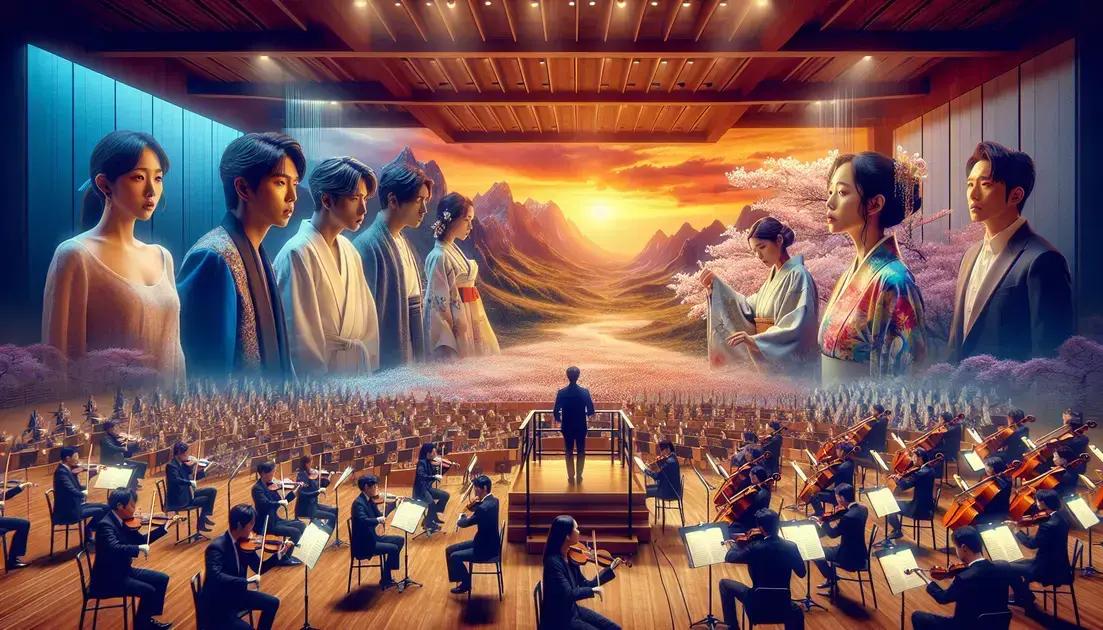
The music and soundtracks in Asian dramas play a crucial role in heightening emotional impact and enriching storytelling. In Korean dramas, original soundtracks (OSTs) are influential, often featuring popular K-pop artists. These OSTs enhance scenes with their melodic harmonies and poignant lyrics, creating an emotional resonance that lingers with viewers.
Japanese dramas integrate soundtracks that often reflect rich musical traditions and experimental compositions. The music complements the drama’s mood by incorporating both modern and traditional Japanese instruments. This blend of sounds adds a unique layer to the narrative, enhancing moments of tension, joy, and reflection.
Chinese drama soundtracks frequently include orchestral compositions and traditional Chinese instruments. The music helps to underscore epic stories, with grand symphonies accentuating dramatic plot twists and heroic feats. The soundtrack serves as an auditory journey, guiding viewers through historical landscapes and intense character experiences.
Soundtracks Enhancing Asian Drama Narratives
The strategic use of music in Asian dramas is vital for creating an immersive atmosphere. Whether it is through Korea’s emotive pop ballads, Japan’s innovative scores, or China’s sweeping symphonies, the role of music and soundtracks is integral in amplifying the narrative and emotional depth of each drama.
The Unique Fabric of Asian Drama Production
Examining the varied elements of Asian drama production reveals a beautiful tapestry of cultural, technical, and artistic expressions. Each country imparts its unique storytelling flair, shaping its narratives with a distinct style.
The contrasts between Korean emotional depth, Japanese imaginative tales, and Chinese historical grandeur demonstrate the intricacies of regional filmmaking. Likewise, the technical finesse in filming techniques and strategic use of soundtracks further amplify the core themes and enhance viewer engagement.
These insights into the production differences between Korean, Japanese, and Chinese dramas highlight the delicate balance of tradition and innovation that defines Asian drama. Together, these elements create immersive experiences that resonate with audiences globally, celebrating the rich diversity of cultures and stories.
Explore these dramas to not only enjoy captivating stories but to understand the subtle nuances that make each one a true masterpiece.
FAQ – Frequently Asked Questions on Asian Drama Production
How do cultural influences shape Asian drama production?
Cultural influences create unique storytelling styles by incorporating societal norms, historical elements, and traditional values, varying by country.
What distinguishes filming techniques in Korean, Japanese, and Chinese dramas?
Korean dramas focus on cinematic quality and emotional depth, Japanese incorporate stylized cinematography, and Chinese emphasize grandeur with expansive sets.
How do storytelling styles differ among Korean, Japanese, and Chinese dramas?
Korean dramas emphasize emotions and relationships, Japanese dramatize with imagination and brevity, while Chinese blend history and mythology for epic narratives.
What role does music play in Asian dramas?
Music enhances the emotional and narrative depth of dramas with Korean K-pop OSTs, Japanese innovative scores, and Chinese orchestral compositions.
Can viewers outside of Asia connect with these dramas?
Yes, the universal themes of love, perseverance, and cultural diversity allow global audiences to connect with and appreciate Asian dramas.



